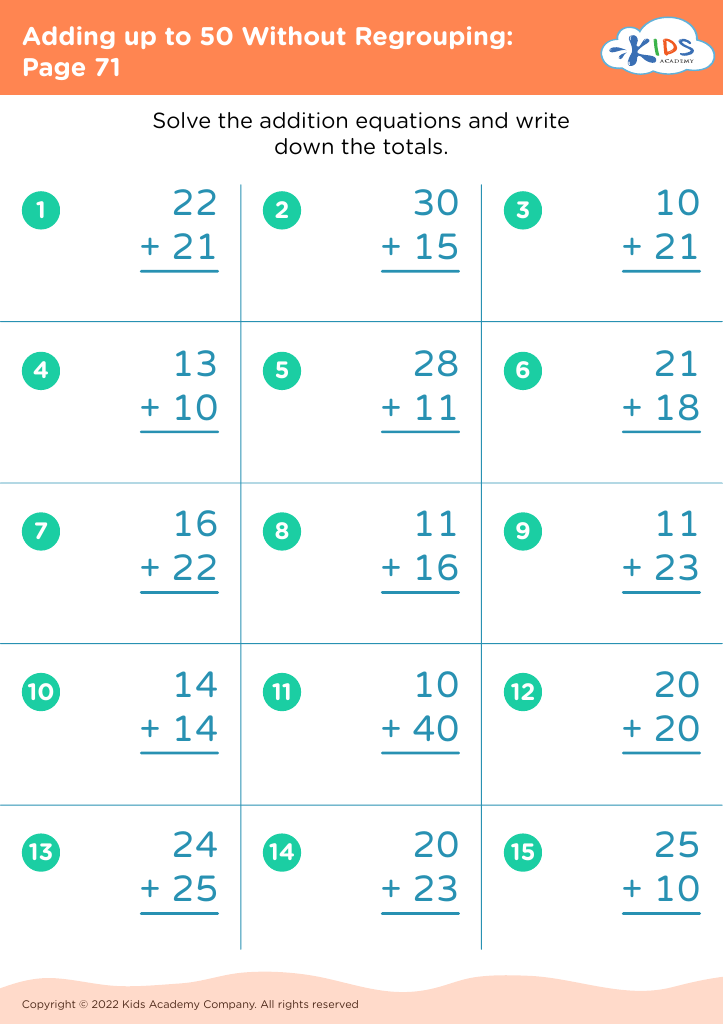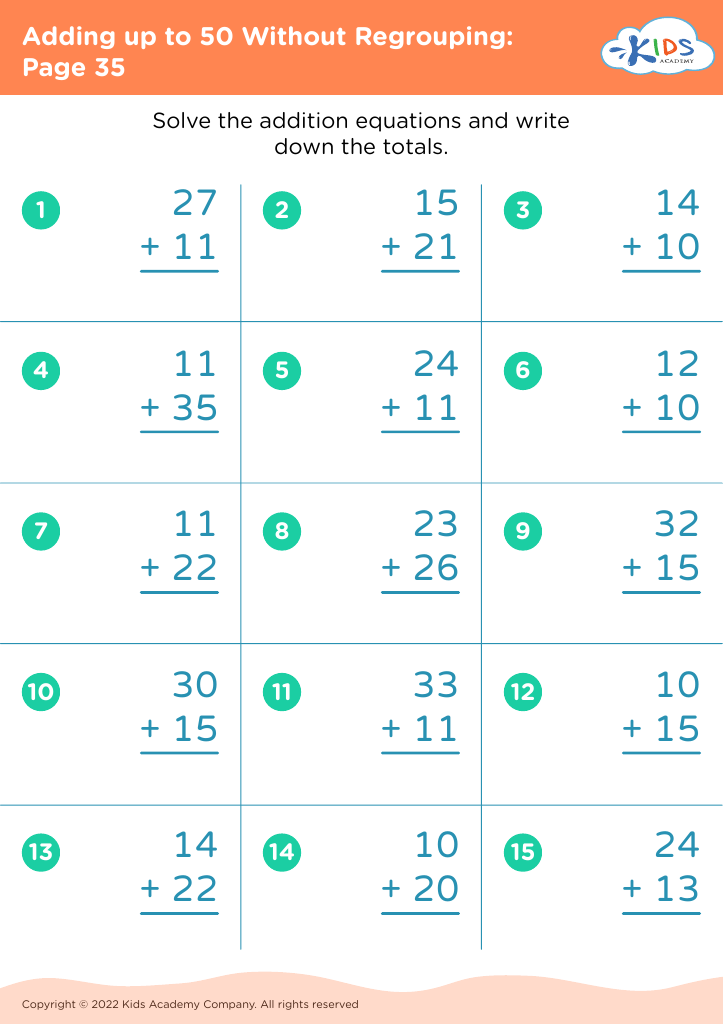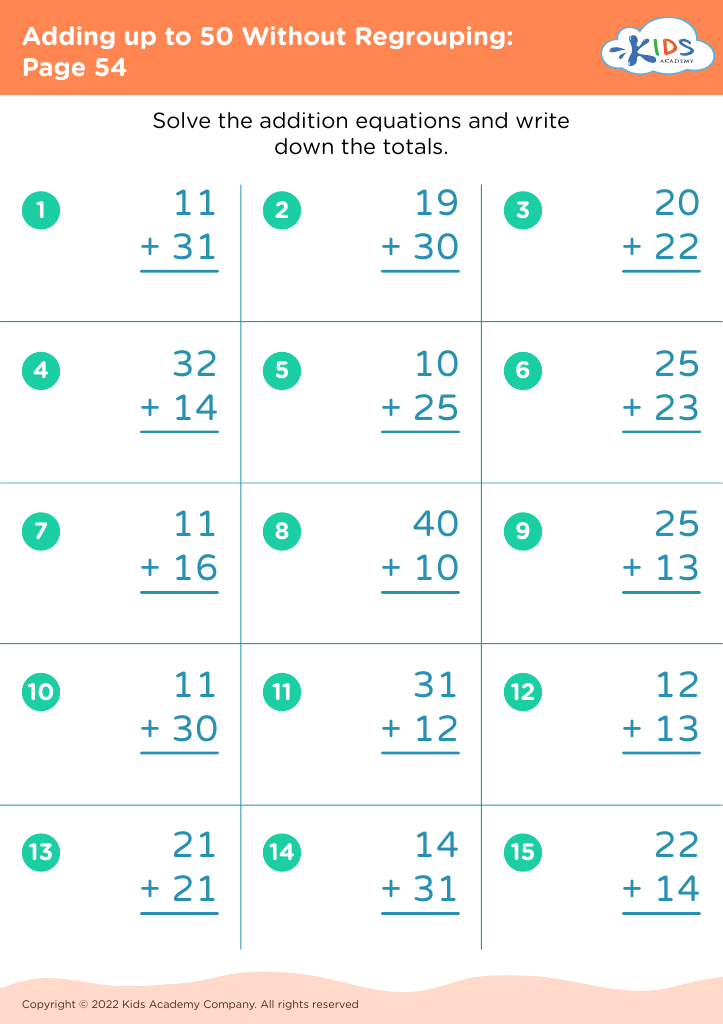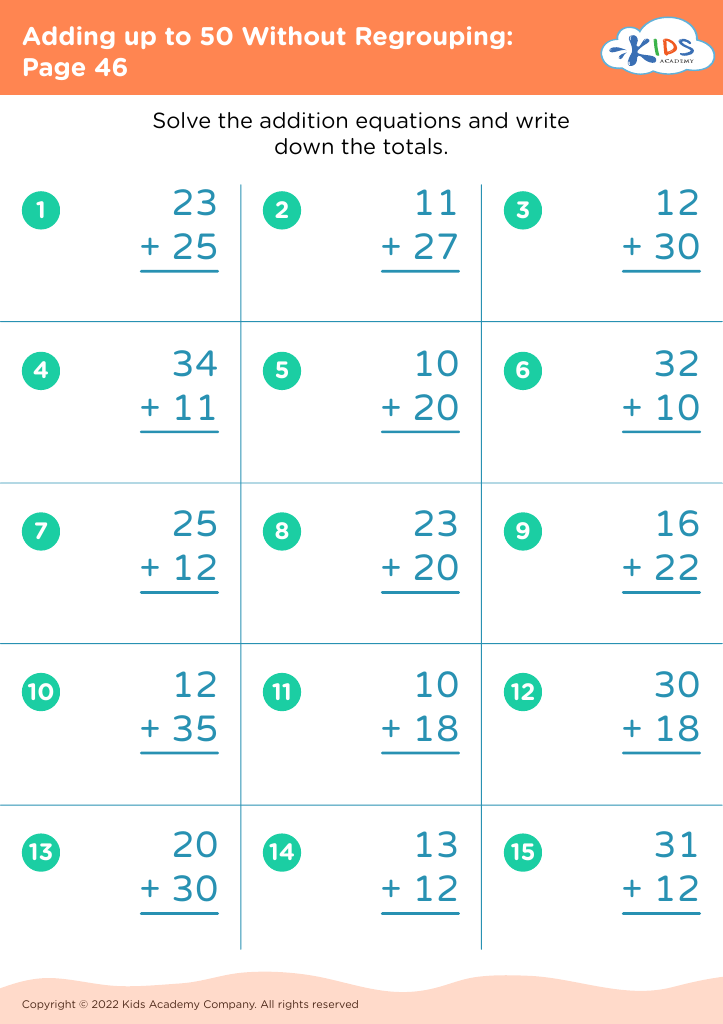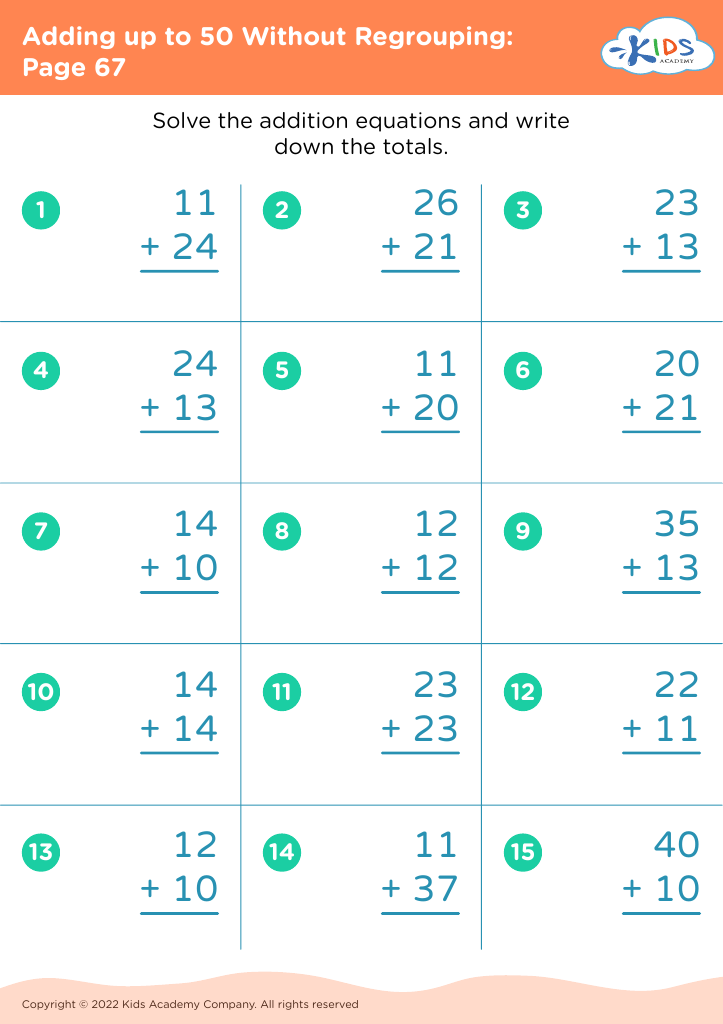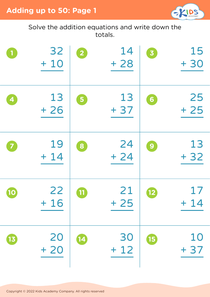Counting practice Adding up to 50 Without Regrouping Worksheets for Ages 7-8
5 filtered results
-
From - To
Enhance your child's mathematical skills with our "Counting Practice Adding Up to 50 Without Regrouping Worksheets" designed for kids ages 7-8. These engaging worksheets provide a fun way for young learners to practice addition without regrouping, helping them build confidence in their counting and arithmetic abilities. Each worksheet contains colorful visuals and age-appropriate problems that reinforce foundational math concepts. Perfect for at-home learning or classroom activities, our resources encourage children to master their addition skills while enjoying the learning process. Equip your child with the tools they need to succeed in math with these interactive and educational worksheets!
Counting practice, particularly adding up to 50 without regrouping, is essential for children ages 7-8 as it lays a strong foundation for mathematical understanding. This stage in a child's education is crucial; students develop number sense, which helps them grasp more complex concepts in the future.
Engaging in addition without regrouping builds confidence and fluency in basic arithmetic, facilitating quicker and more accurate problem-solving. For parents and teachers, fostering this skill can result in significant long-term academic benefits. Mastery of basic addition forms the groundwork for multiplication, division, and more intricate problem-solving scenarios.
Additionally, this practice enhances cognitive skills such as concentration, memory, and logical thinking. Establishing a solid grasp of basic math promotes a positive attitude toward mathematics, helping to mitigate math anxiety as students encounter more challenging topics later on.
Moreover, counting by 5s and 10s, along with simple addition exercises, invites parents and teachers to engage with children through interactive games and activities, making learning enjoyable. By emphasizing the importance of counting practice, adults empower children to build essential skills for their academic journey and encourage cooperative learning experiences that strengthen parent-child or student-teacher bonds. Overall, incorporating this practice is a straightforward yet impactful strategy to support children’s mathematical development.
